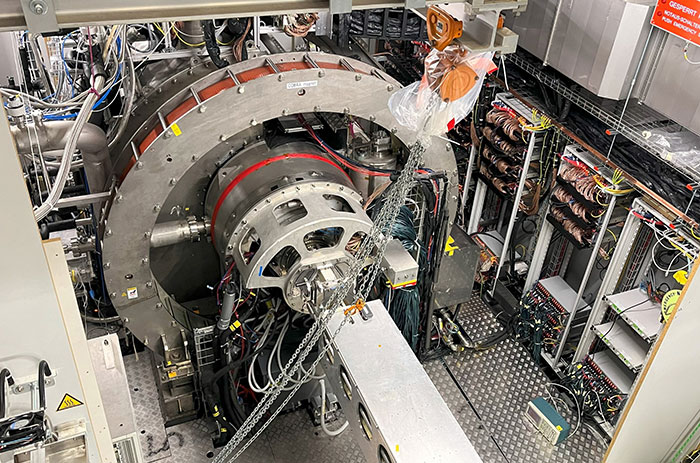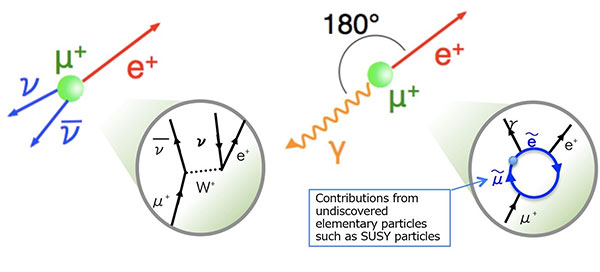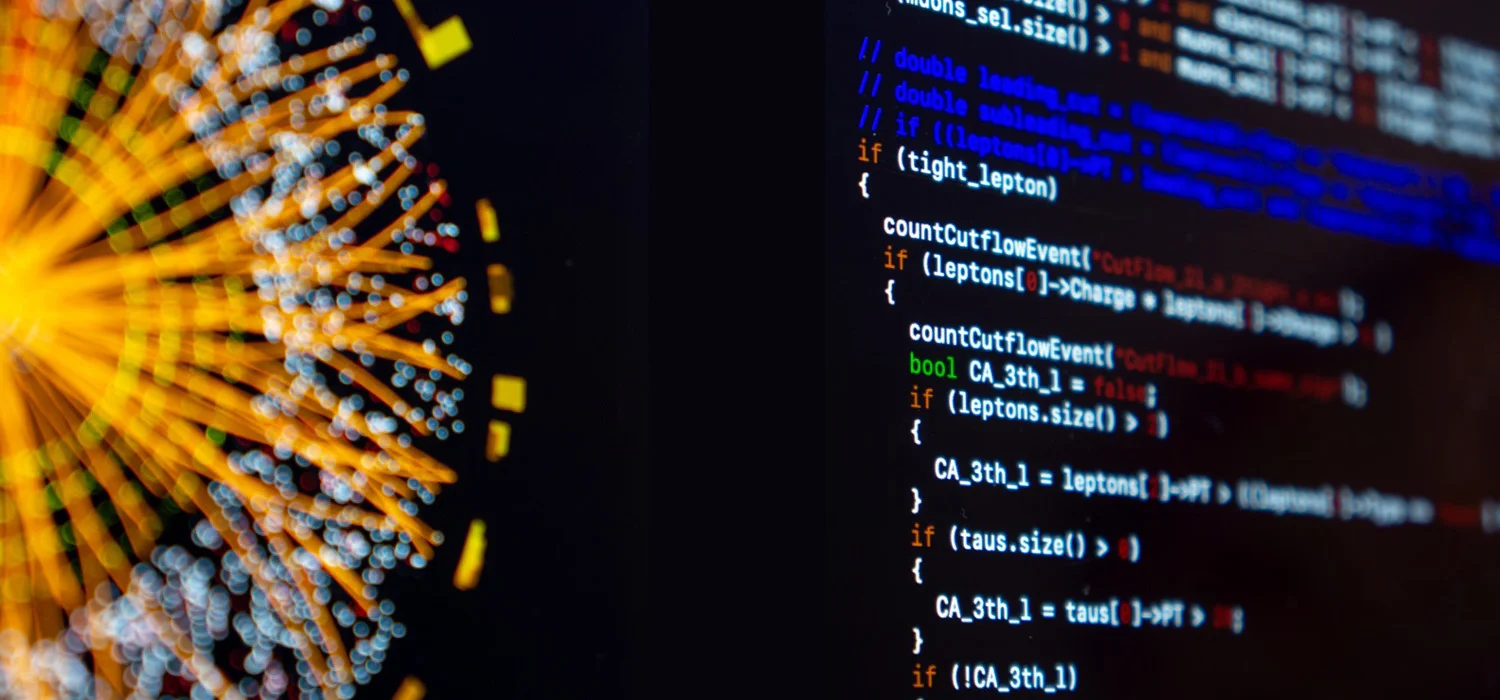* Professor Mori, co-spokesperson of the MEG II Collaboration, presented the first result of the MEG II experiment at the BRIDGE 2023 international workshop in Switzerland.
International Center for Elementary Particle Physics, The University of Tokyo
School of Science, The University of Tokyo
Summary of Presentations
The MEG II, an international collaboration with institutes from Japan, Switzerland, Italy, the United States, the United Kingdom, and other countries where The University of Tokyo, High Energy Accelerator Research Organization (KEK), and Kobe University play a leading role, started the data-taking to search for the rare muon decay, mu -> e + gamma at the end of September 2021(Fig. 1, 2). The experiment utilizes innovative detectors and the world's most intense muon beam at the Paul Scherrer Institute (PSI) in Switzerland. The result from the search for mu -> e + gamma conducted using the first data acquired in 2021 is presented. The mu -> e + gamma has not been discovered in this data, but instead, together with the result of the previous MEG experiment, a most stringent limit on the existence of the mu -> e + gamma (1 in 3 trillion times). This research is an attempt to unravel the Grand Unification of elementary particles at the birth of the Universe. The MEG II experiment continues the data acquisition and is expected to greatly exceed the search sensitivity of the MEG experiment with the data already obtained in 2022. The data acquisition will continue until 2026, eventually achieving a search sensitivity about 10 times higher than that of the MEG experiment (1 in 17 trillion times), and through the search and discovery of the mu -> e + gamma, the Grand Unification of elementary particles at the birth of the universe will be verified.
Publications
Workshop: BRIDGE2023(Bridging Research Innovations in Diverse muon and neutron science by GEneral collaboration between Japan and Switzerland)
Title:“The First Result of MEG II on Search for mu -> e + gamma”
Speaker: Prof. Toshinori Mori(ICEPP, The University of Tokyo)
Description
The MEG II Collaboration will present the first result of its search for the flavor-violating muon decay, mu -> e + gamma. MEG II, the upgrade of MEG, started physics data taking in late 2021 and is continuing to accumulate data to search for the lepton-flavor-violating muon decay with a target sensitivity of 6 x 10-14 at 90% C.L., i.e., an order of magnitude improvement over MEG.


In mu -> e + gamma, very heavy unknown new particles such as supersymmetric particles contribute.
● For more details in the BRIDGE2023 website. (related site)
